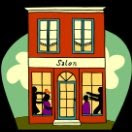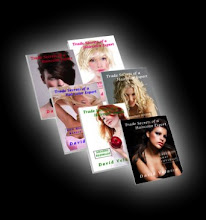Like all the haircolor that we do, we’ll always have a best and worst candidate for any particular shade and single process blonding is no different. As a matter of fact, this is one category of color where choosing the right candidate is absolutely essential in order to achieve success. And as you will soon see, there are very few really good candidates from which to choose.
Look at the Exposed Contributing Color Pigment Guide below. You'll see that the colors RED or ORANGE appear as a “contributing color pigment” as you try to lighten any one that is a natural level 1, 2, 3, 4, 5, 6. The colors GOLD and YELLOW appear as the “contributing color pigment” for anyone with a natural level of 7, 8, 9, and 10.
This means that if you try to make a single process blonde out of anyone that is a natural level 1-6, you are going to get very warm tones and produce an orange/brassy blonde.
As you can see, these clients are not good candidates for single process blonding. This does not mean, however, that we cannot make them blondes in other ways, such as a double process blonde or a slightly warm single process blonde with highlights woven in to defuse the warm tones. (I teach this in my books, Incredible Single Process Blondes and Stunning Double Process Blondes)
That leaves us with natural levels 7, 8, 9, 10.
If you think about it, why would anyone with a natural level 9 or 10 want or need to color his/her hair blonde. The only reason that I can think of is if he/she has gray in his/her blonde hair and wants to re-color it blonde. This will actually be darkening, not lightening, the hair.
So that leaves us with only two natural levels to chose from, 7 & 8. Yes, that’s right, believe it or not, out of all the people in the world the only clients, in my opinion, that will become beautiful, successful single process blondes are the ones that are already starting out with a light natural base color such as natural levels 7 & 8.
Having said this, here is the exception to this rule - there are a few level 6 clients that you may be able to make successful single process blondes.
These are clients that have very light color skin tones and light cool eye color such as light blue, light gray or light green. The light skin tones and light eye color will usually indicate that they have very light Pheomelanin (red-yellow) color pigmentation and, therefore, usually will not pull too much gold as you lighten their hair. Go ahead and give them a try.
Have a Great Week,
David
Let Your Tips Pay For Your Education.
E-Z Pay Plan just $27. Mo.
















